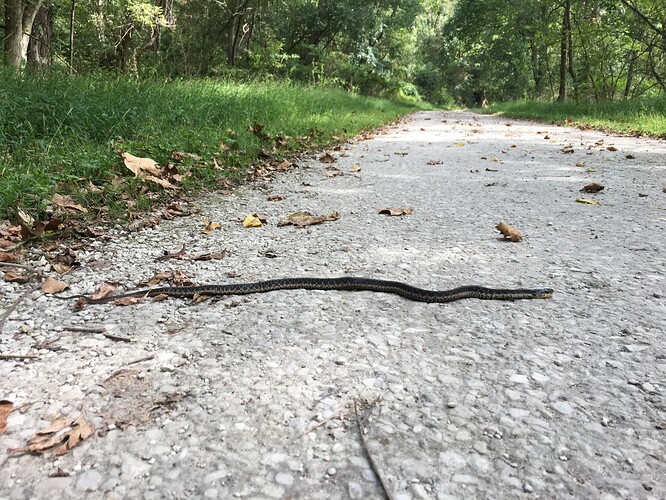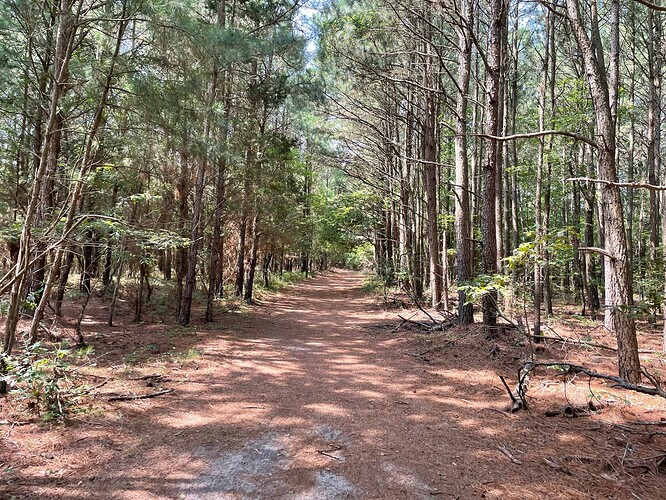Can you upload it to Wikimedia Commons? I was planning to take picture like this to illustrate OSM Wiki (and for now at least weather in my area is not making easy to take illustrative pictures)
I am rather trying to document actual tagging than design a new one in this case.
Very fine picture! Illustrates perfectly why one would want to differentiate between compacted and fine_gravel.
I took reference of https://wiki.openstreetmap.org/wiki/Tag:surface%3Dgravel - perhaps before @Mateusz_Konieczny worked to clear it up ![]()
Curiously, what we here call “Kies” (fine-gravel in OSM speak), in construction means pebbles according to Kies – Wikipedia and what we here call “Schotter” (pebbles in OSM speak) in construction means crushed stone Schotter – Wikipedia
Curiously, what we here call “Kies” (fine-gravel in OSM speak), in construction means pebbles according to Kies – Wikipedia
have a look at this article again, the DIN 4022 distinguishes 3 size classes of gravel, fine medium and rough:
Kies (G/Gr) | Korngröße |
- | - |
Grobkies (gG/CGr) | 20,0–63,0 mm |
Mittelkies (mG/MGr) | 6,3–20,0 mm |
Feinkies (fG/FGr) | 2,0–6,3 mm |
and what we here call “Schotter” (pebbles in OSM speak) in construction means crushed stone Schotter – Wikipedia
also called “Splitt” or “gebrochener Kies” (the latter closes the circle)
This is one that I personally get stumped on from time to time and I’m glad we’re discussing it! I also wanted to grab a photo of what I’d consider compacted, as opposed to fine gravel.
Here’s my local rail trail (and a snake crossing it for scale). You can see there is fine gravel and sand in aggregate, forming a sturdy but pliable surface.
Sometimes this surface becomes eroded to the point where it may resemble fine gravel, and I think that can be confusing. If the compacted smoothness goes to horrible, is that now fine gravel?
Hi all
There are problems for OSM with the surface types fine_gravel, gravel and compacted. There are subtle shifts in the way the word gravel is understood by various speakers of English. Nearly all roads are compacted, a mix of particle sizes is typically graded and rolled. The larger particles leave gaps which are filled by smaller particles, the gaps between them are filled by sand and between them are dust. Later, as the road degrades, the dust and fine particles are lost to water and wind and the larger particles dominate the top layer. The road user sees loose gravel but underneath a thin layer of loose gravel is a compacted road.
Both the photos at fine_gravel are probably compacted, File:Finegravel0.jpg and File:DSC05537a-Feinschotterweg.jpg
I think there is little difference between loose gravel and compacted, maybe only a year’s wind and rain.
Some final notes. Gravel can refer to river gravel or crushed rock. Both compact with a range of particle sizes in the mix but angular crushed rock compacts better. Compacted requires the user to make a judgement below the surface where they cannot see, we are encouraged to tag with what can be ground truthed. Railway ballast, 40mm or bigger is a rare surface in my experience, it seems counter productive to use “gravel” for it. Users will continue to tag compacted surfaces as “gravel” regardless what is written here, shouldn’t the wiki document actual tagging rather than try to impose definitions.
Tony
Yes, I think this debate is really fruitless tbh. The definitions (past & present) include surface texture as well as subsurface composition (eg constructed road bases). All combinations are possible. Photos only show the surface, not what’s beneath. Contributors emphasise factors such as “looseness” which is yet another feature again, and one which quickly changes after rain and time since grading. The definitions of the existing categories (compacted, fine gravel and gravel) are all a bit of a mess and, not surprisingly, their application across the world is even messier. The more often that people change the wiki, the worse things get. Adding selective photos to override the textual descriptions doesn’t help either. I’d suggest that we accept that it’s all pretty vague and move onto other, more productive initiatives.
I wouldn’t call it fruitless at all. It’s important if you want to do bike routing with OSM data, for example. There’s a big difference between a lightly gravel-topped firm towpath and an unimproved trackbed of railway ballast, but both are sometimes described as “gravel”.
Yes, maybe just move on. But if we are going to make any progress, I think that good quality photos are essential. I may be guilty of “Adding selective photos to override the textual descriptions” but if so, it is unintentional, I have tried to illustrate what is in the text and any shifts in meaning are unintentional. More photos please.
In Sweden I have been using surface=fine_gravel as a less technical/less precise term of a gravel road with relatively smooth surface, while I’ve seen surface=compacted as a more technical and actually describing more then just the surface, but how the road is constructed. I generally use just “unpaved” though for roads I don’t have more precise local knowledge of. Other Swedish mappers often use “gravel” as the generic term for unpaved road, as in daily Swedish speak we say “gravel road” about basically anything that isn’t paved.
Anyway, lately I’m starting to regret some of my fine_gravel uses and would probably have used compacted instead. The surface of a maintained compacted road varies over the year, here during the spring new coarse gravel is put on, which then gradually is worked into the road to provide a harder more even surface.
Yes, I ride a gravel bike. I fully agree that creating a separate tag for rail ballast is paramount. It’s what remains after that’s gone that’s a mess, given the poorly-differentiated mix of gravel, fine gravel and compacted in both the wikis and on the ground.
Depends on what you want to achieve. Deciding on proper mapping and ordering people to use it? Hopeless, people utterly ignored what wiki claimed about fine_gravel
Documenting actual use? Useful and possible even if conclusion will be similar to Forest - OpenStreetMap Wiki page
Can you upload it to Wikimedia Commons ? It also would be useful at OSM Wiki to illustrate surface pages.
Certainly, I’ll upload and paste back
If you set an unusual surface=* value, then there is a high risk that navigators will not understand at all and skip this tag. It is also very important how the surface behaves in wet conditions. For similar cases, I usually set surface=unpaved.
If you set an unusual
surface=*value, then there is a high risk that navigators will not understand at all and skip this tag. It is also very important how the surface behaves in wet conditions.
I agree with both these statements, but the conclusion will not answer the second question:
how much of them? deep layers or just smattering on top not really changing characteristics?
Seems like the second case so I would go with compacted


